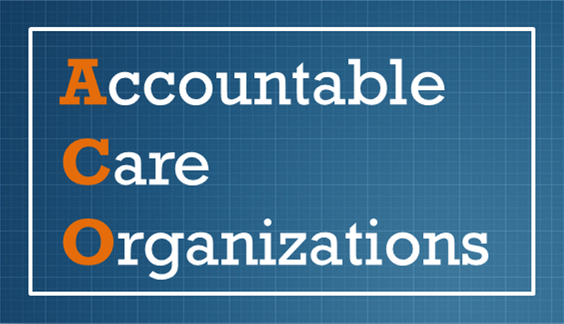Altering Accountable Care Organizations May Bring More Success
CMS may need to re-design aspects of the Medicare Shared Savings Program if they want to promote accountable care and value-based payments.

- Despite the fact that Accountable Care Organizations (ACOs) and the Medicare Shared Savings Program was supposed to put a dent in the rising healthcare costs around the country, the latest results show that both in 2013 and 2014, only about 25 percent of ACO providers were able to earn a segment of shared savings.

Additionally, the American Journal of Managed Care reports that the earned shared savings in 2014 was 33 percent less than in the previous year. The problem seems to be that quality performance scores were lowered among the 86 ACOs that garnered shared savings.
It seems that the Medicare Shared Savings Program and Accountable Care Organizations have not made a significant impact in lowering medical costs across the board to date. However, over the coming years, it is possible for ACOs to have a bigger influence in containing healthcare spending.
In order to accomplish this, the sheer number of Accountable Care Organizations will need to grow quickly. This is especially important if the Centers for Medicare & Medicaid Services (CMS) is expected to meet its goal of having 50 percent of Medicare payments be based on value by 2018.
The ACO model is the primary system for reaching alternative payment models, as it focuses on care coordination, population health management, and quality improvements. However, providers will only be more likely to participate in Accountable Care Organizations if the incentive is high and they are able to achieve shared savings.
CMS may need to re-design aspects of the Medicare Shared Savings Program if they want to promote accountable care and value-based payments. Another area is which Accountable Care Organizations and the Shared Savings Program is competing with is the Medicare Advantage payment model.
It seems that the number of recipients of the Medicare Advantage program is growing, which makes it more difficult for ACOs to recruit beneficiaries as well as incentivize providers to take part in accountable care. CMS will need to establish ACOs as a more primary model of care within the Medicare population and thereby decrease the costs associated with the program.
“Until the ACO program is redesigned to produce improved odds at achieving shared savings, provider participation will decline, and the decline could conceivably accelerate because, knowing Medicare fee-for-service is increasingly moving toward risk-based performance agreements, providers will choose instead to contract with MA plans,” the report states.
“For CMS to be successful in establishing ACOs as APMs and, in turn, successfully reducing Medicare cost growth, the agency needs to level the Medicare playing field for ACO providers.”
It is necessary to reform some aspects of the ACO model of care in order to ensure it reaches the same successes as Medicare Advantage plans. For instance, program rules such as payments tied to quality achievements will need to be on the same level.
 There are a number of Accountable Care Organizations that have focused their energies on quality improvement and HealthITAnalytics.com interviewed several representatives from the Iowa Clinic and the Family Health Care of Siouxland (FHC) facility, both of which are ACO participants.
There are a number of Accountable Care Organizations that have focused their energies on quality improvement and HealthITAnalytics.com interviewed several representatives from the Iowa Clinic and the Family Health Care of Siouxland (FHC) facility, both of which are ACO participants.
Ed Brown, Iowa Clinic’s CEO, explained that the healthcare spending taking place across their organization was “not sustainable” and they began exploring options that would improve their future success as a healthcare provider.
When it comes to quality improvement across an ACO model of care, it’s vital to have a working relationship between the payer and the participating providers. Sheryl Terlouw, Director of Network Innovation at Wellmark, explained that they are willing to work on methods for improving the performance at Accountable Care Organizations regardless of their prior quality measurement scores because the willingness and desire to achieve better outcomes and patient satisfaction ratings is more important in a general partnership between payers and providers.
“The cost and the quality does vary among our ACOs,” Terlouw clarified. “And we’ve certainly faced the question of why we would want to enroll a practice with a very low quality score. But the answer is that they want to become an ACO because they want to work on it, right? As a payer, that’s exactly what we have to encourage.”
“We would rather bring folks into a relationship with us where they can understand what their quality and performance outcomes really mean, and give them to the tools to work on it, than have someone who is unable to make progress because they don’t have the motivation or the data.”
ACOs that work with commercial payers must form contracts that are based on meeting quality standards in order to partake in shared savings. Additionally, risk-based financial arrangements are generally the type of reimbursement systems set up by the two parties.

Additionally, the organization has focused their efforts on incorporating EHRs toward workflow improvements and population health management strategies. Technology is not the only way to improve care coordination, as professionals within both Accountable Care Organizations help coordinate follow-up appointments, provide medicine education, and generally manage patient discharge.
“We look at any barriers that they may have from a socioeconomic standpoint, and we help them identify resources in our community that might be appropriate for them. Our health coaches also follow up on our well-child visits and immunizations, and other routine care services,” McCabe-Harding concludes.
“They work very closely with our chronic disease patients to make sure they are getting the care they need, keeping their follow-up appointments, and accessing the right education.”
